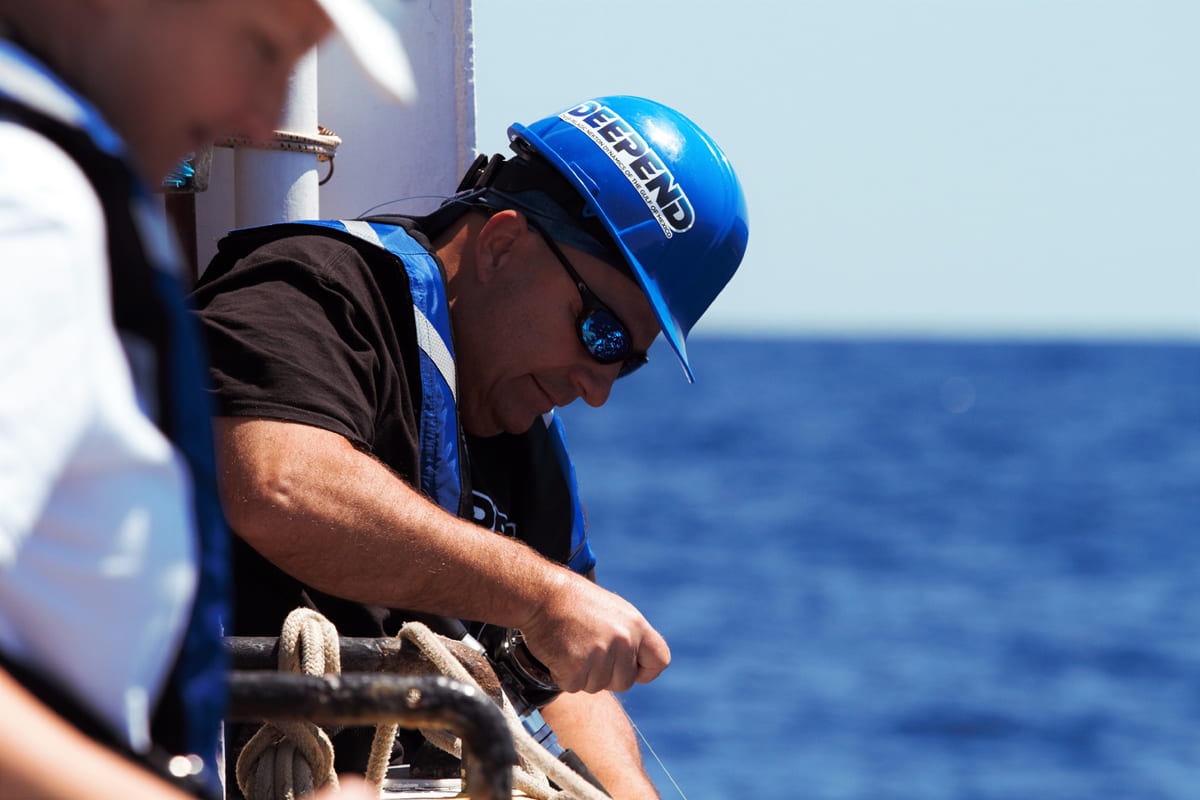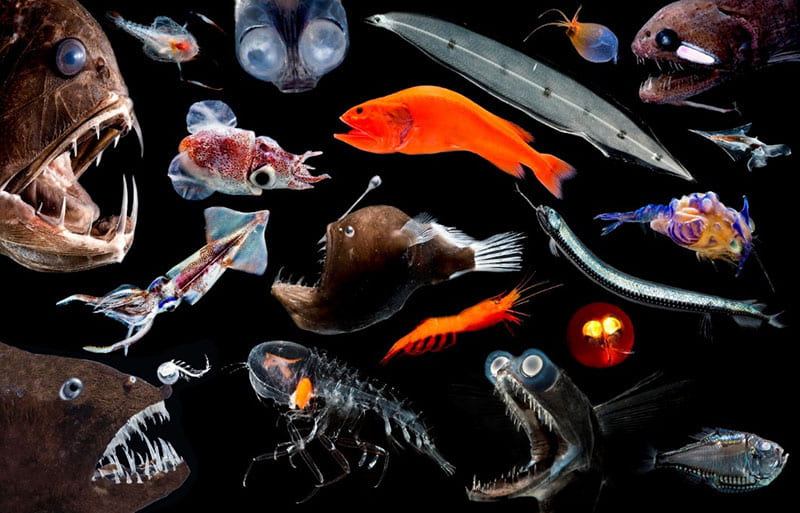Professor’s Co-Authored Paper Promotes Marine Biodiversity Strategy

- Dr. Tracey Sutton
- A composite of images of deep-pelagic organisms.
A fundamental challenge to marine biodiversity protection is the relatively poor and patchy understanding of the diversity and distribution of marine life, making it more difficult to strategically designate protective measures and assess their success.
The marine environment presents unique challenges: the world ocean is vast, much of it is distant from human populations, its life is often hidden from view and sampling presents formidable logistical difficulties. As a result, observations of ocean life are a fraction of those on land and are especially sparse in the water column and deep sea. These ecosystems have been the subject of an internationally recognized program led by researchers at Halmos College of Arts and Sciences and the Guy Harvey Oceanographic Research Center (HCAS).
The program, titled “DEEPEND” (www.deependconsortium.org), is led by Professor Tracey Sutton, who was among 28 scientists, economists and marine policy experts worldwide who were invited to assess the U.S. national strategy for marine biodiversity protection. Sutton participated in a series of dialogues and workshops over the past three years, the results of which were recently published.
In this paper, published in One Earth, the task force that included Sutton proposed a scientific framework to assess the distribution and abundance of marine biodiversity in U.S. waters inside and outside existing protections and applied it to waters from the near coast to the borders of the U.S. Exclusive Economic Zone (200 miles offshore).
Why This Matters
Marine biodiversity globally is in crisis. Climate change, overfishing, habitat destruction and other extractive industries are causing species losses at an alarming rate. Increasingly, scientists, managers and governments are taking steps to protect marine life. But it requires a network of protected areas that are ecologically representative, foster connectivity between habitats and consider the dynamic nature of coastal and marine habitats.
The framework is the basis by which managers and communities can ground regional and local actions with knowledge of marine biodiversity distribution. It’s crucial to fulfilling the president’s commitment to protect 30% of land and waters by 2030, implementing the White House Ocean Climate Action and National Ocean Biodiversity Strategy. It can inform existing mandates that involve area-based management, from the National Marine Sanctuaries Act to the Marine Mammal Protection and the Endangered Species Act.
Posted 02/04/24

